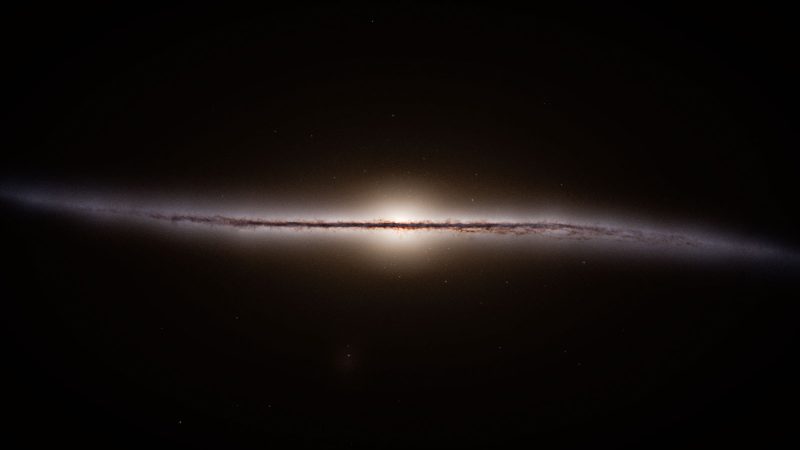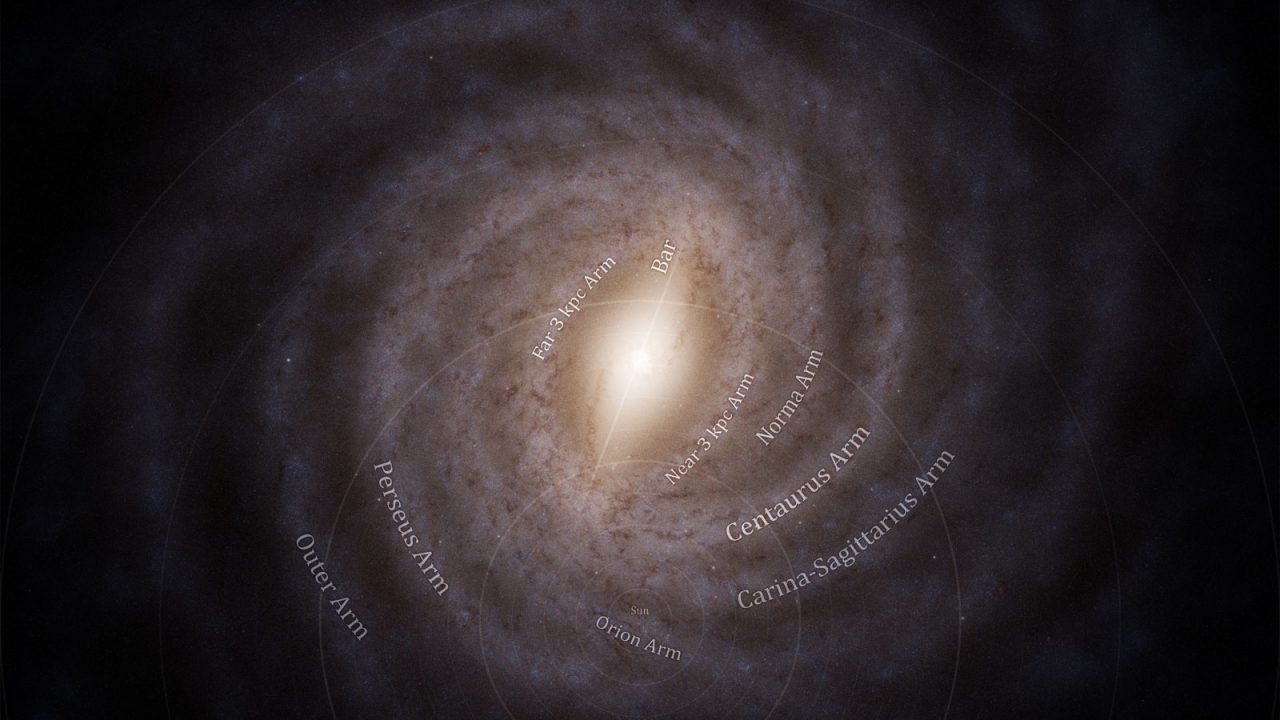She began collaborating on the project nearly two decades ago. ESA has confirmed the completion of the scientific observations of the probe launched in 2013
The Gaia project, led by the European Space Agency and focused on mapping the Milky Way, is entering a new phase after ESA confirmed the completion of the spacecraft’s scientific observations, which began with its launch on 19 December 2013. Since then, the Gaia probe has amassed over 3 billion observations of approximately 2 billion stars and other objects, creating the largest and most precise map of the Milky Way. Although Gaia’s fuel tank is running low, the mission will continue with scheduled technological tests in the coming weeks before the spacecraft moves to its retirement orbit. Furthermore, two massive data releases are planned—one expected in 2026 and another at the end of this decade.
Having been involved in the project since 2006, alongside the Galician Group for Gaia—part of the DPAC (Data Processing and Analysis Consortium) made up of about 450 international professionals—the professor of Applied Physics and CIM-UVigo researcher Ana Ulla explains that “the enormous volume and precision of Gaia’s astrometric data, covering nearly 2 billion stars, has provided highly significant results”. She highlights the precise knowledge now available regarding the structure, mass distribution, dynamics, and evolutionary history of the Milky Way. This includes the characterisation of stellar streams, remnants of other galaxies consumed by ours, and even the ability to predict future galactic collisions.
Intense data processing
Over the years, Ana Ulla’s work on the Gaia project, alongside Galician Group members Minia Manteiga, Carlos Dafonte, Daniel Garabato, and Marco Antonio Álvarez from UDC, has focused on two key areas: technical documentation of procedures for extracting physical parameters (such as temperature, luminosity, and gravity) of stars, and collaboration in scientific exploitation for various studies. These include analysing the characteristics and properties of planetary nebulae, post-AGB stars, and hot subdwarfs.
Now, with the end of Gaia’s scientific observations, Ulla’s data processing work has intensified. “Within DPAC, we are working hard on producing the 4th data catalogue, which will likely be released in 2026 and will include thousands or even millions of objects across all categories—from Solar System bodies to exoplanets and distant galaxies”. Ulla emphasises the incredible statistical possibilities, even employing AI, with such vast amounts of data. “My contribution will continue in both technical and scientific fields, within this context of terabytes of data to process. New lines of scientific research are also emerging, which will be explored with new collaborators. All of this makes the work immensely rewarding”. The professor also notes preliminary plans for a 5th Gaia data catalogue, which means the mission could continue until 2030 or beyond.
Professional and personal learning and an exciting discovery
Ana Ulla speaks highly of the opportunity this project has given her to work with an interdisciplinary team combining astrophysics and computer engineering, and to conduct research at such a high level. “I feel I’ve learned so many interesting things, both professionally and personally”, the UVigo professor explains.
When asked about the project’s most significant discovery, Ulla points to Gaia BH3, the largest stellar-mass binary black hole in the Milky Way, identified thanks to Gaia’s exceptional precision in measuring the peculiar motion of its companion star. “Although it was the third black hole discovered by Gaia, this one has a mass approximately 33 times that of the Sun, making it the most massive object of its kind in our galaxy. Gaia BH3 is considered a ‘dormant’ black hole because, in principle, it does not accumulate matter from its companion or emit detectable radiation like other binary systems”, she details. Ulla highlights the unexpected and unusual nature of this discovery, as well as its immense importance for studies on stellar evolution, adding that it was “a very exciting moment”.
The best map of the Milky Way
Gaia’s work mapping the positions, distances, motions, brightness variations, composition, and other characteristics of stars using its instruments has allowed it to achieve its main objective: creating the largest and most accurate map of the Milky Way. “It includes significant changes compared to previous models because Gaia has transformed our understanding of the Milky Way. Even basic ideas, such as the rotation of the galaxy’s central bar, the disk’s warp, the detailed structure of the spiral arms, and the interstellar dust near the Sun, have been revised”, notes Stefan Payne-Wardenaar, a scientific visualiser at the Max Planck Institute for Astronomy in Germany. He adds that distant parts of the Milky Way remain conjectures based on incomplete data. “With further Gaia data releases, our view of the Milky Way will become even more precise”, he concludes.
In addition to Gaia BH3, the spacecraft has provided millimetre-precision orbital data for over 150,000 asteroids and has produced measurements so accurate that it has identified potential moons around hundreds of them. Gaia has also created the largest 3D map of around 1.3 million quasars, with the farthest one shining when the Universe was only 1.5 billion years old.
The research activity of the CIM is co-financed by the Xunta de Galicia and the European Union, through the European Funds (FEDER).
Source: DUVI




